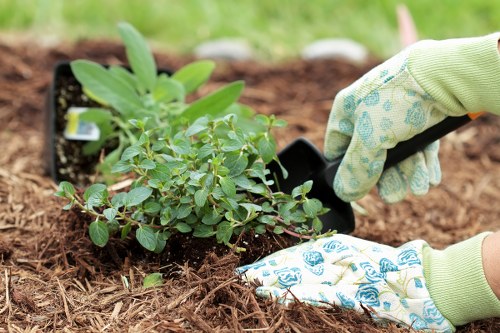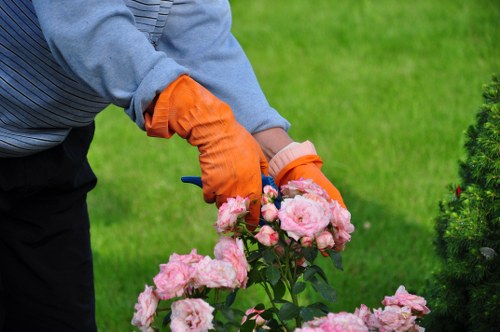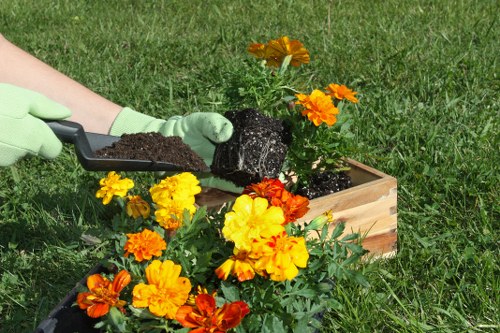Mastering Landscape Gardening: A Comprehensive Guide for Gardening Enthusiasts

Introduction to Landscape Gardening
Landscape gardening is an art and science that combines aesthetics with functionality to create beautiful and sustainable outdoor spaces. Whether you're a seasoned gardener or a beginner, understanding the fundamentals of landscape gardening can transform your garden into a stunning oasis.
At its core, landscape gardening involves the planning and design of outdoor spaces, incorporating elements such as plants, hardscapes, water features, and lighting. This comprehensive approach ensures that every aspect of the garden works in harmony to achieve both visual appeal and practical benefits.
In this guide, we'll explore the essential components of landscape gardening, offer expert tips, and provide actionable steps to help you create and maintain a garden that not only looks great but also thrives year-round.

Planning Your Landscape Garden
Assessing Your Space
The first step in landscape gardening is assessing your available space. Consider the size, shape, and existing features of your garden area. Take note of the sunlight exposure, soil quality, and drainage patterns, as these factors will influence your plant selection and garden design.
Sunlight and Shade
Understanding the sunlight patterns in your garden is crucial. Different plants have varying light requirements, ranging from full sun to partial shade. Mapping out the areas of your garden that receive the most sunlight versus those that are shadier will help you make informed decisions about plant placement.
Soil Testing
Soil quality plays a significant role in plant health and growth. Conduct a soil test to determine its pH level, nutrient content, and texture. This information will help you amend the soil appropriately to create an optimal environment for your plants.

Designing Your Garden Layout
Choosing a Design Style
Selecting a design style sets the tone for your landscape garden. Popular styles include formal, informal, cottage, modern, and Mediterranean. Each style has distinct characteristics and plant preferences, so choose one that aligns with your aesthetic preferences and complements your home's architecture.
Focal Points and Features
Incorporate focal points such as statues, fountains, or a pergola to draw attention and add interest to your garden. These features can serve as the centerpiece of your design, around which other elements are arranged.
Pathways and Circulation
Designing pathways ensures easy navigation through your garden. Use materials like gravel, stone, or wood to create paths that connect different areas of your garden. Proper circulation enhances the overall flow and accessibility of your outdoor space.

Selecting Plants for Your Landscape Garden
Plant Selection Criteria
Choosing the right plants is vital for a thriving landscape garden. Consider factors such as climate compatibility, maintenance requirements, flowering seasons, and foliage color. Selecting a variety of plants ensures year-round interest and biodiversity.
Perennials vs. Annuals
Perennial plants live for multiple years and provide long-term structure to your garden, while annuals complete their life cycle in one growing season. Incorporating both can add depth and color throughout the year.
Native Plants
Native plants are adapted to your local climate and soil conditions, making them more resilient and easier to maintain. They also support local wildlife and contribute to the ecological balance of your garden.

Incorporating Hardscapes and Features
Hardscape Elements
Hardscapes such as patios, decks, walls, and fences provide structure and functionality to your landscape garden. They serve as the framework around which your plantings and other features are organized.
Water Features
Adding water features like ponds, waterfalls, or fountains introduces a soothing element to your garden. The sound of running water can enhance the sensory experience and attract beneficial wildlife.
Lighting Solutions
Proper lighting extends the usability of your garden into the evening and highlights key features. Solar lights, LED fixtures, and strategically placed spotlights can create ambiance and improve safety.
Maintaining Your Landscape Garden
Maintenance is essential to keep your landscape garden looking its best and ensuring the health of your plants. Regular tasks include watering, pruning, weeding, and fertilizing.
Implementing a maintenance schedule helps you stay organized and address issues promptly. Using sustainable practices like composting and mulching can enhance soil health and reduce the need for chemical fertilizers.
Additionally, seasonal maintenance tasks ensure that your garden adapts to changing weather conditions, promoting resilience and longevity.
Sustainable Practices in Landscape Gardening
Incorporating sustainable practices not only benefits the environment but also creates a more resilient and low-maintenance garden. Consider implementing water conservation techniques, such as drip irrigation and rainwater harvesting, to reduce water usage.
Using organic fertilizers and pest control methods minimizes the impact on beneficial insects and soil health. Additionally, choosing perennial and native plants reduces the need for frequent planting and maintenance.
Embracing sustainability in your landscape garden fosters a harmonious relationship with nature and contributes to the well-being of your local ecosystem.
Trends in Landscape Gardening
Landscape gardening trends evolve with changing lifestyles and environmental considerations. Currently, there is a growing emphasis on creating functional outdoor living spaces, such as outdoor kitchens, lounges, and dining areas.
Vertical gardening and green walls are popular for maximizing space, especially in urban settings. These innovative solutions allow gardeners to grow more plants in limited areas while adding visual interest.
Additionally, the use of smart technology in gardening, such as automated irrigation systems and garden monitoring devices, enhances efficiency and convenience for modern gardeners.
Benefits of Landscape Gardening
- Enhanced Aesthetics: A well-designed landscape garden adds beauty and curb appeal to your property.
- Environmental Impact: Gardens contribute to biodiversity, improve air quality, and support local wildlife.
- Health and Well-being: Spending time in a garden can reduce stress, promote physical activity, and enhance overall mental health.
- Property Value: Quality landscaping can increase the value of your home, making it more attractive to potential buyers.
- Sustainable Living: Incorporating sustainable practices in gardening fosters a responsible and eco-friendly lifestyle.
Common Challenges and Solutions
Landscape gardening comes with its set of challenges, such as pest management, plant diseases, and adverse weather conditions. Addressing these issues proactively ensures the longevity and health of your garden.
Pest Control: Use integrated pest management (IPM) techniques to manage pests organically. This approach minimizes the use of harmful chemicals and promotes a balanced ecosystem.
Soil Erosion: Implement ground covers and proper drainage systems to prevent soil erosion, especially on slopes and uneven terrains.
Expert Tips for Successful Landscape Gardening
- Start Small: Begin with manageable projects and gradually expand as you gain experience.
- Plan for Growth: Consider the mature size of plants to avoid overcrowding and ensure adequate space for growth.
- Mix Plant Types: Combine trees, shrubs, perennials, and annuals to create depth and variety.
- Use Mulch: Mulching conserves moisture, suppresses weeds, and improves soil health.
- Regular Maintenance: Consistently care for your garden to address issues and maintain its appearance.
Conclusion
Landscape gardening is a rewarding endeavor that blends creativity with practicality. By understanding the key principles and investing time in planning and maintenance, you can cultivate a garden that not only beautifies your space but also enhances your quality of life.
Embrace the journey of landscape gardening, experiment with different plants and designs, and enjoy the myriad benefits that come with a well-maintained outdoor sanctuary.
Contact us today to begin transforming your garden into the landscape of your dreams!



